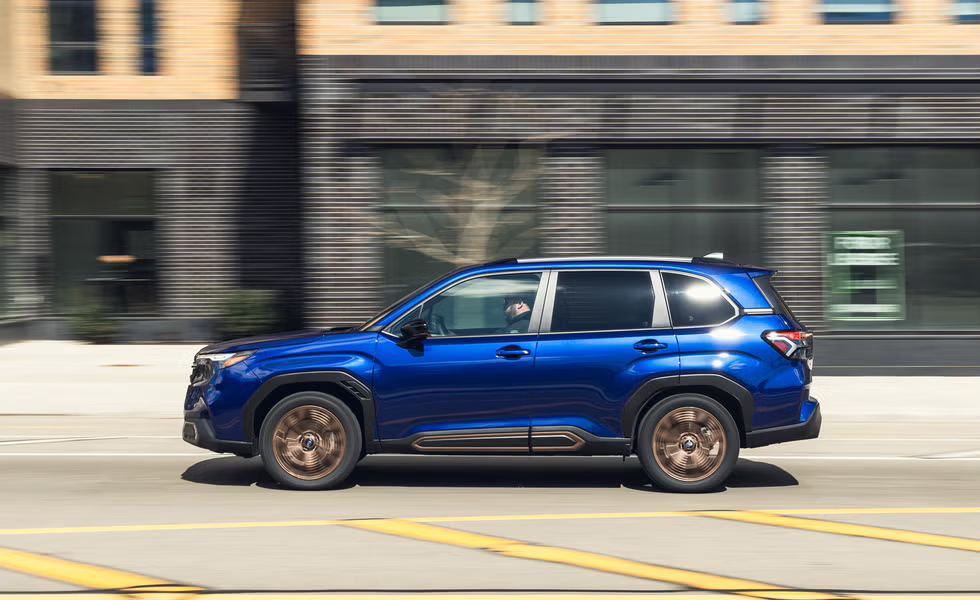Subaru, renowned for its all-wheel-drive vehicles and commitment to safety, recently announced significant price increases across nearly its entire model lineup. This move reflects a broader trend within the automotive industry, where manufacturers are adjusting pricing in response to evolving market conditions.
These changes mean that consumers considering a new Subaru will likely face higher purchase costs than before. Understanding the specifics of these increases and the reasons behind them is crucial for potential buyers.
Details of the Price Increases: A Model-by-Model Breakdown
The recent price adjustments are not uniform across all Subaru models. The increases range from a minimum of $750 to a more substantial $2055, depending on the specific model and even the trim level. This tiered approach suggests that Subaru is strategically applying the increases where they are most necessary or where demand remains strong.
Popular Models Facing Higher Costs
Many of Subaru’s best-selling and most popular vehicles are directly impacted by these price hikes.
- Crosstrek and Impreza: These compact and subcompact models, known for their versatility and fuel efficiency, will see a consistent increase of $750. This relatively smaller hike might reflect their competitive position in their respective segments.
- Ascent: As Subaru’s largest SUV, the Ascent’s price jump is more significant, ranging between $1085 and $2055. This variance depends on the chosen trim level, indicating that higher-end versions of the Ascent will bear a larger portion of the increase. This could be due to more advanced features or higher material costs associated with these premium trims.
- BRZ and WRX: Enthusiasts of Subaru’s performance-oriented vehicles, the BRZ sports coupe and the WRX performance sedan, will notice a consistent $2000 increase for each model. This substantial rise reflects their niche market and potentially higher production costs for specialized components.
- Legacy Sedan: Despite its upcoming discontinuation, the Legacy sedan is also subject to a $1600 price increase. This could be an attempt to recoup costs before phasing out the model or simply a reflection of the overall market adjustments applied across the board.
- Outback and Forester: These two highly popular SUVs, cornerstone models for Subaru, will also see significant price adjustments. The Outback’s prices are set to rise by between $1715 and $1820, while the Forester’s increases will range from $1075 to $1600. These variations likely depend on the trim level and the features included, reflecting the widespread demand for these family-friendly and adventure-ready vehicles.
The Sole Exception: The Solterra EV’s Stagnant Price
Amidst these widespread increases, only one Subaru model has been spared: the Solterra EV. This all-electric SUV’s price remains unchanged. This decision is likely strategic, reflecting the challenges Subaru has faced in selling the Solterra in large numbers since its introduction. By maintaining its current price, Subaru might be aiming to make the Solterra more competitive in the rapidly evolving and increasingly crowded electric vehicle market, hoping to attract more buyers without the added burden of a price increase.
Why Are Prices Rising? Understanding “Current Market Conditions”
Subaru’s official explanation for these price adjustments is “current market conditions.” While seemingly vague, this phrase encapsulates a multitude of economic and supply chain factors influencing the automotive industry today.
Offsetting Increased Production and Operational Costs
A spokesperson for Subaru, in a statement to Car and Driver, elaborated on the rationale. The company stated that “The changes were made to offset increased costs while maintaining a solid value proposition for the customer.” This statement indicates that Subaru, like many other manufacturers, is grappling with rising expenses. These costs can stem from several areas:
- Raw Material Costs: The prices of essential raw materials used in car manufacturing, such as steel, aluminum, copper, and precious metals for catalytic converters, have experienced significant fluctuations and often increases.
- Logistics and Shipping: Global supply chain disruptions, increased fuel costs, and higher demand for shipping services have driven up logistics expenses.
- Labor Costs: Wages for manufacturing workers, engineers, and other personnel have also been subject to upward pressure in many regions.
- Technology and R&D: The continuous development and integration of advanced technologies, especially in areas like safety features, infotainment systems, and electric powertrains, require substantial investment, which eventually translates to higher vehicle costs.
By raising prices, Subaru aims to maintain its profit margins and ensure financial stability while continuing to offer features and quality that justify the investment for consumers.
Tariffs: An Undisclosed Factor?
While some might instinctively link these price increases to tariffs on imported goods, Subaru has consciously avoided making such a direct correlation. The company spokesperson maintained a general stance, focusing on broader market dynamics rather than specific trade policies. They explicitly stated that “Subaru pricing is not based on the country of origin of its products.”
This contrasts with some other automakers who have been more transparent about tariffs contributing to their price adjustments. This suggests that while tariffs might be a contributing factor indirectly influencing overall costs, Subaru prefers to present the increases as a response to a wider array of market pressures rather than a single, politically sensitive issue.
Broader Industry Trends: Subaru Joins a Growing List
Subaru’s decision to implement mid-year price increases is not an isolated event. It aligns with a discernible trend across the automotive industry. Many manufacturers are deviating from the traditional practice of only adjusting prices with new model years. This shift underscores the dynamic and often unpredictable nature of the current global automotive market.
For instance, Ford, another major automaker, also recently increased prices on specific models manufactured in Mexico. In Ford’s case, the company explicitly listed tariffs as a contributing factor to their increases. This comparison highlights how different automakers are navigating similar economic pressures and communicating their strategies to the public.
The cumulative effect of these industry-wide price adjustments means that consumers looking for new vehicles, regardless of brand, are likely to encounter higher prices than in previous years. This challenging environment impacts both manufacturers, who must balance profitability with consumer affordability, and buyers, who face increased financial commitments for their desired vehicles.







